The Ultimate Summer Home Maintenance Schedule
With warmer weather here, you’re probably ready to take a break and enjoy the outdoors. But first, have you prepped your home so you can relax and enjoy a safe summer? Summertime is the perfect time to keep up with your home maintenance schedule.
We’ve put together a summer home maintenance checklist to guide you. Our schedule covers nearly every area of your home — both indoors and out — and prioritizes your safety. Use it to help safeguard your home from fires, unwanted pests, water damage, accidents and much more. After all, a safe summer makes for the best summer.
Make your home safer by following this maintenance checklist:
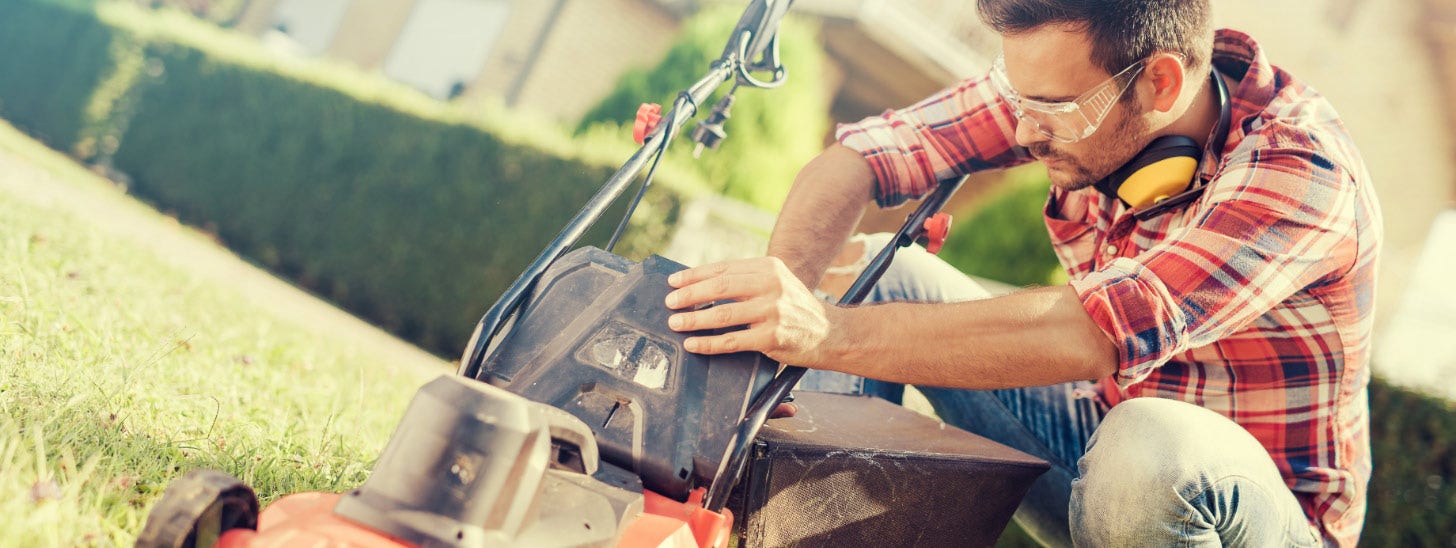
Landscaping
-
Use equipment safely:
While the use of outdoor equipment and tools to improve your home’s landscape may seem like an easy task, nearly 320,000 people visit the ER each year as a result of injuries connected to lawn and gardening equipment. It’s important to familiarize yourself with how to use your equipment, wear proper safety gear, take breaks in the heat and be mindful of your surroundings.
-
Grade the soil:
What does the soil look like around your home, especially for the first 10 feet after walking out your door? If it doesn’t decline at a slight angle away from your home, consider grading your soil to help prevent water from seeping inside. Use a rake and shovel to help create a slight incline, or contact a professional landscaping company for help.
-
Remove standing water:
Rainstorms can leave standing water in buckets, plant pots and even low levels of land. Standing water attracts mosquitoes and other pests, which can be harmful to your health. Plus, standing groundwater can seep into your home and cause water damage. When summer arrives, look around and eliminate unwanted water around your yard.
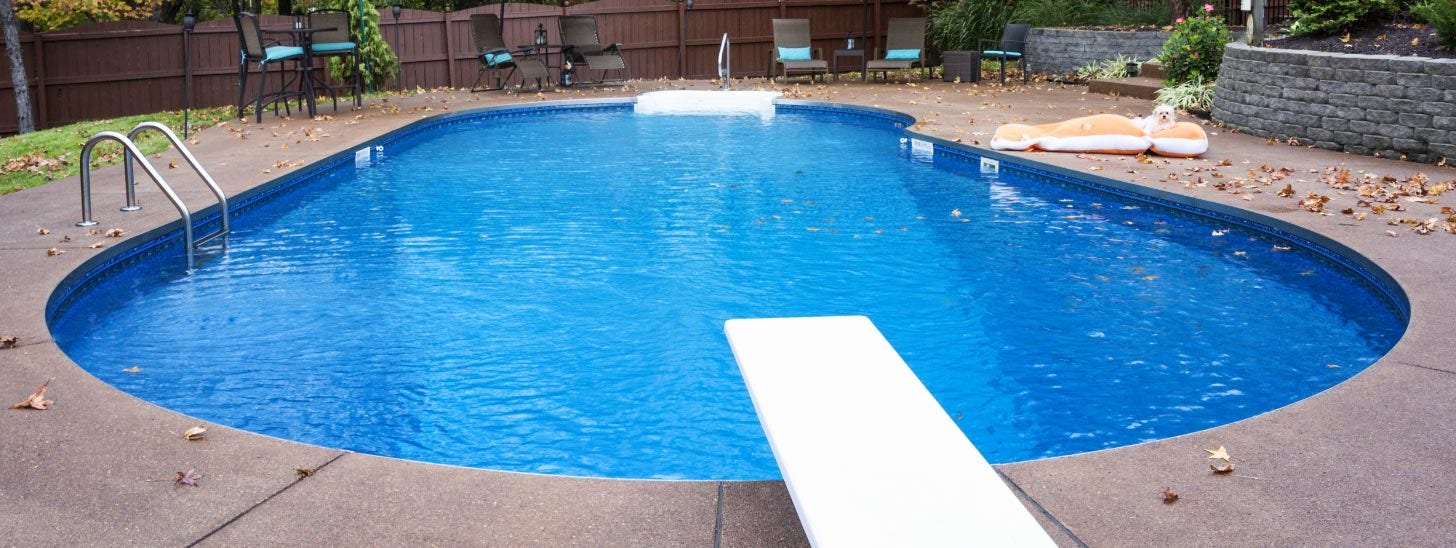
Swimming pools
-
Maintain the pool filter:
Before pool season begins, it’s a good idea to thoroughly clean your filter. Depending on the type of filter you have, you’ll need to either backwash it to redirect the water flow, or hose off and reinsert your cartridge or sand filter. Next, clean the pump filter by unplugging it and shutting it off, and removing the trap cover and basket. Then, dump any debris so it doesn’t interfere with your pool’s water circulation. Refer to the owner’s manual or call a professional pool company for help.
-
Check for pool leaks:
Over time, all pools lose water from evaporation and splashing. But, about one in 20 pools has a detectable leak. Check for leaks by placing a five-gallon bucket of water on the pool’s second step. Fill the bucket with enough water so it matches the pool’s water level. Then turn off the pool’s pump and any refilling device, and wait 24 hours. If the pool’s water level has dipped below the bucket’s level, then you probably have a leak. Remember, leaks can be costly. They can also create dangerous sinkholes in your lawn.
-
Inspect and maintain your trees:
Seasonal storms can impact the health and stability of your trees. Check trees located close to your pool, including those with branches hanging over or near it. You may want to consider hiring a professional to inspect and remove dangerous limbs that could break or fall later. If a tree falls on your pool, it can cause water leaks or damage to the pool structure, sometimes resulting in higher cleanup costs than the tree removal itself.
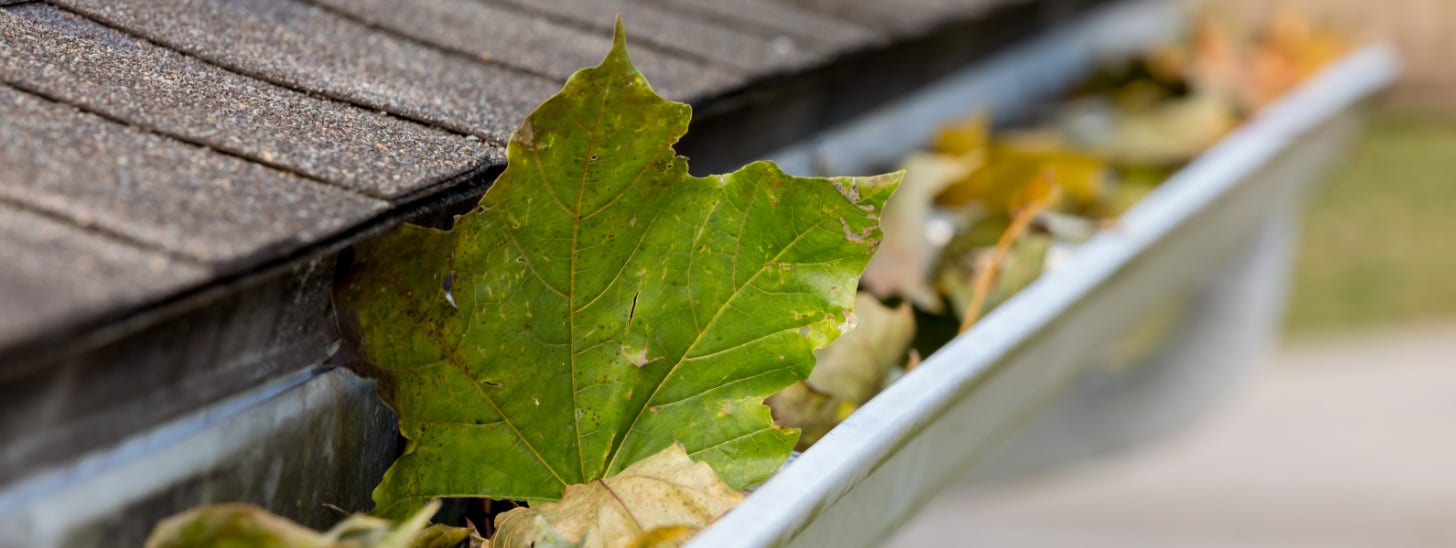
Your home’s exterior
-
Clean gutters and downspouts:
Your home’s gutters and downspouts can clog with leaves and other debris. When this happens, it can cause water backup that can spill over the sides of the gutters and cause soil erosion or leak into your home. Before summer begins, make sure your gutters and downspouts flow freely. It’s good practice to recheck them frequently, especially after a rainstorm.
-
Inspect and clean kids’ playsets:
Every year, about 50,000 children end up in the emergency room from injuries suffered on playgrounds. About 80% of those injuries happen when children fall. Before the kids head outside to play:
- Check swing sets’ nuts and bolts, and tighten, if needed.
- Add oil to moving parts, if needed, to help gliding.
- Check to make sure protective caps and plugs are in place.
- Look at swing sets, ropes and other parts, and replace if they’ve warped, cracked or deteriorated.
-
Pressure wash your home’s exterior:
Pressure washing can boost your home’s curb appeal, but it can also protect your health. Pressure washing your home in late spring or early summer can help remove built-up mold and mildew that often contribute to asthma and allergies. Consider consulting a professional to avoid safety risks.
-
Inspect your roof:
Winter and spring storms, especially hailstorms, can cause damage to your roof. To ensure your safety, consider calling a professional out to inspect your roof. Ask him or her to look for shingle damage and water leaks that can lead to mold and other property damage.
-
Check for chipped paint and rotted wood:
Take a few minutes to walk around your home to check the shingles and exterior trim. Do you see chipped paint or rotted wood? This type of home damage can invite insects, water, and even algae and mildew. Take care to regularly repair and paint damaged areas, before problems get worse.
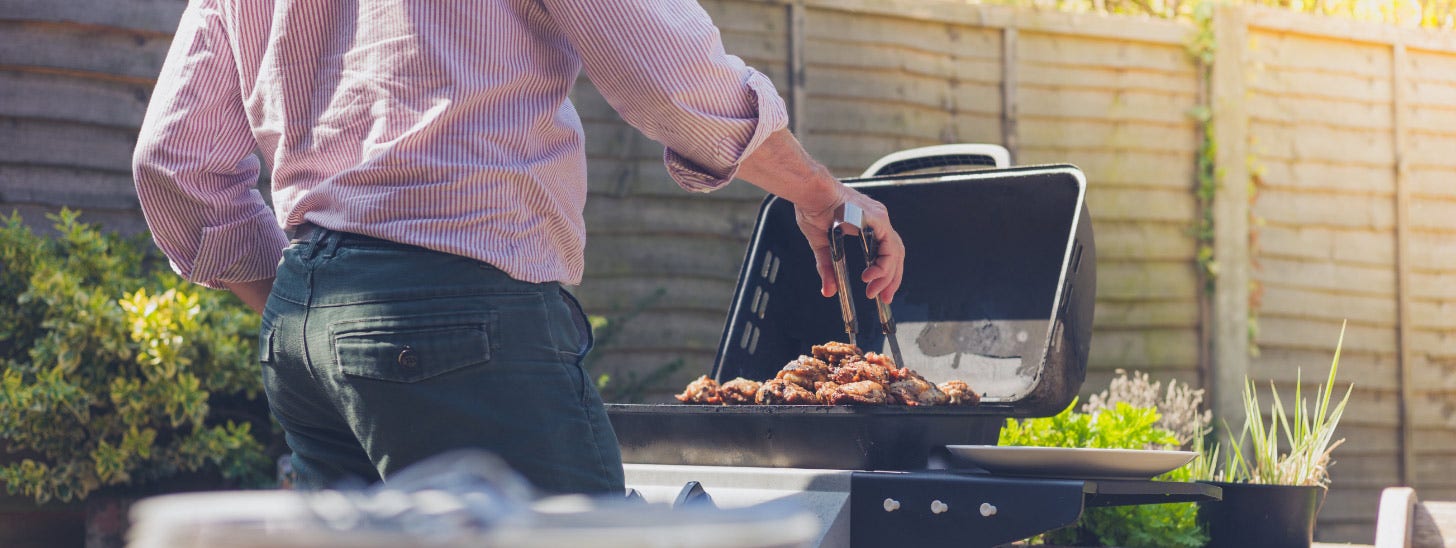
Outdoor grills
-
Move your grill to a safe location:
Summertime means it’s grilling weather. Before you fire up your gas, electric or charcoal grill, move it to a safe location. Keep it at least three feet away from children and pets, and avoid placing your grill near your home, deck railings and any tree branches.
-
Supervise the grill while cooking:
Don’t leave your grill unattended. It’s too easy for a child or pet to get burned, or for a fire to start while you’re not watching.
-
Clean your grill frequently:
Avoid dangerous flare-ups or grease fires by cleaning your grill before cooking and regularly emptying the grease trap.
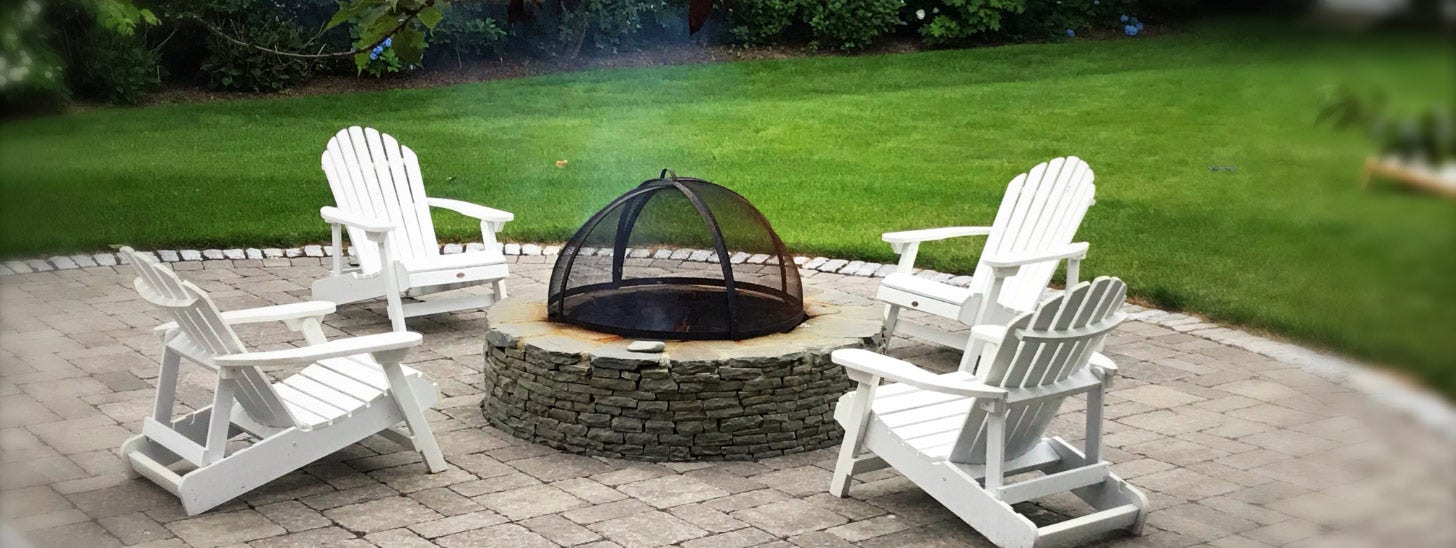
Fire pits and campfires
-
Have a bucket of water or hose nearby:
Place a hose or a five-gallon bucket of water near your fire pit. You’ll need to have water on hand in case the fire gets out of control — and to ensure it’s safely extinguished before you leave the area. Never leave a fire unattended, and make sure it’s out before going in for the night. As a best practice, experts recommend keeping the size of a fire to three feet in diameter and two feet in height. Learn more about home fire safety tips to help protect your property this summer.
-
Use a confined fireplace and screen:
Build a proper fire pit in your backyard with stones or bricks. You can also safely confine your fire using a purchased, portable outdoor fireplace. In addition, you’ll want to install a screen to prevent dangerous embers from blowing away.
-
Remove flammable materials and debris:
Fire pit embers can easily blow around outdoors. To help prevent a fire near your home, clear your yard of flammable materials and leaves before lighting your fire.

Inside your home
-
Secure and lock your garage:
The garage is one of the most vulnerable and lucrative parts of your home, making it a prime target for theft. And, as the weather warms up, you’ll probably use your garage door more. Take time to maintain your garage door and ensure it locks properly. Also, clean out your vehicles and remove valuables that could be stolen.
-
Check humidity levels:
Summer weather can bring humidity. Throughout the summer months, check on your home’s humidity levels using a device called a hygrometer, which is an indoor humidity meter. You can get one online or at most big box stores. Your hygrometer should read a humidity level between 30% and 60%. Any higher and you can risk mold, wood rot and pests. If you notice your home is too humid, run a dehumidifier. This appliance will take extra moisture out of the air and even help reduce allergy symptoms.
-
Inspect your air-conditioning (AC) system or window units:
In most parts of the U.S., summertime means heat and a need to crank up the AC. Before it gets too warm, you’ll want to get your AC system inspected by a licensed HVAC technician. Try to call early — before the busy season sets in.
SOURCES
LawnStarter
The Spruce
This Old House
SFGate
Kaily’s Tree Service
Consumer Product Safety Commission
Homes.com
HomeAdvisor
SafeWise
National Fire Protection Association
Healthline
Your Policy, Policy Declarations or Amended Declarations in effect on the date of loss is the primary source of reference for your coverage, coverage limits and deductible amounts.
This inclusion of non-Amica companies, products, services or statement herein (“Third-Party Content”) is for general informational purposes only and does not constitute a recommendation or endorsement by Amica Insurance. Policies, views, opinions or positions of Third-Party Content expressed herein are those of the authors and do not necessarily reflect the policies, views, opinions or positions of Amica Insurance. Amica Insurance makes no warranties, expressed or implied, as to the accuracy and reliability of Third-Party Content.
This content may contain helpful tips, explanation and advice. Your use of this information is voluntary and may not be effective in every circumstance. Amica encourages you to use good judgement and put safety first.
For more information on our editorial process and content standard, take a look at our editorial guidelines.